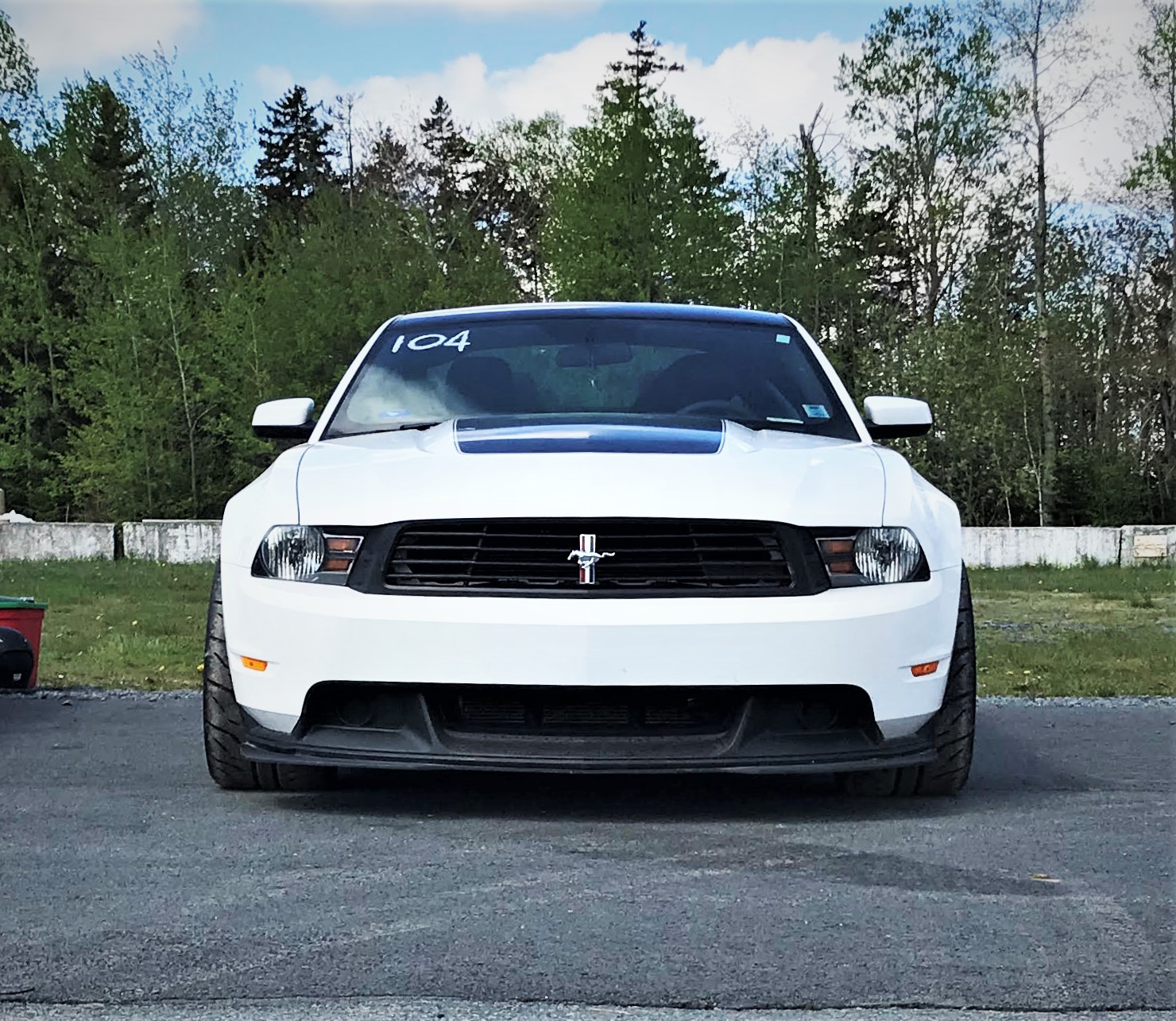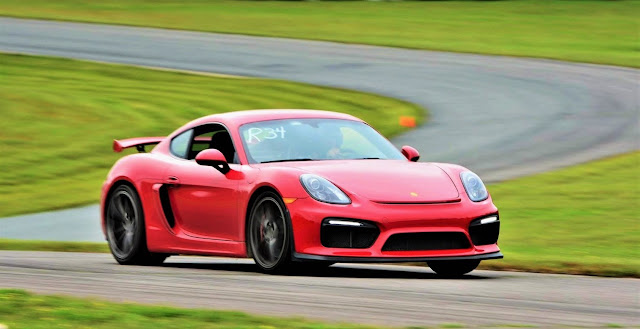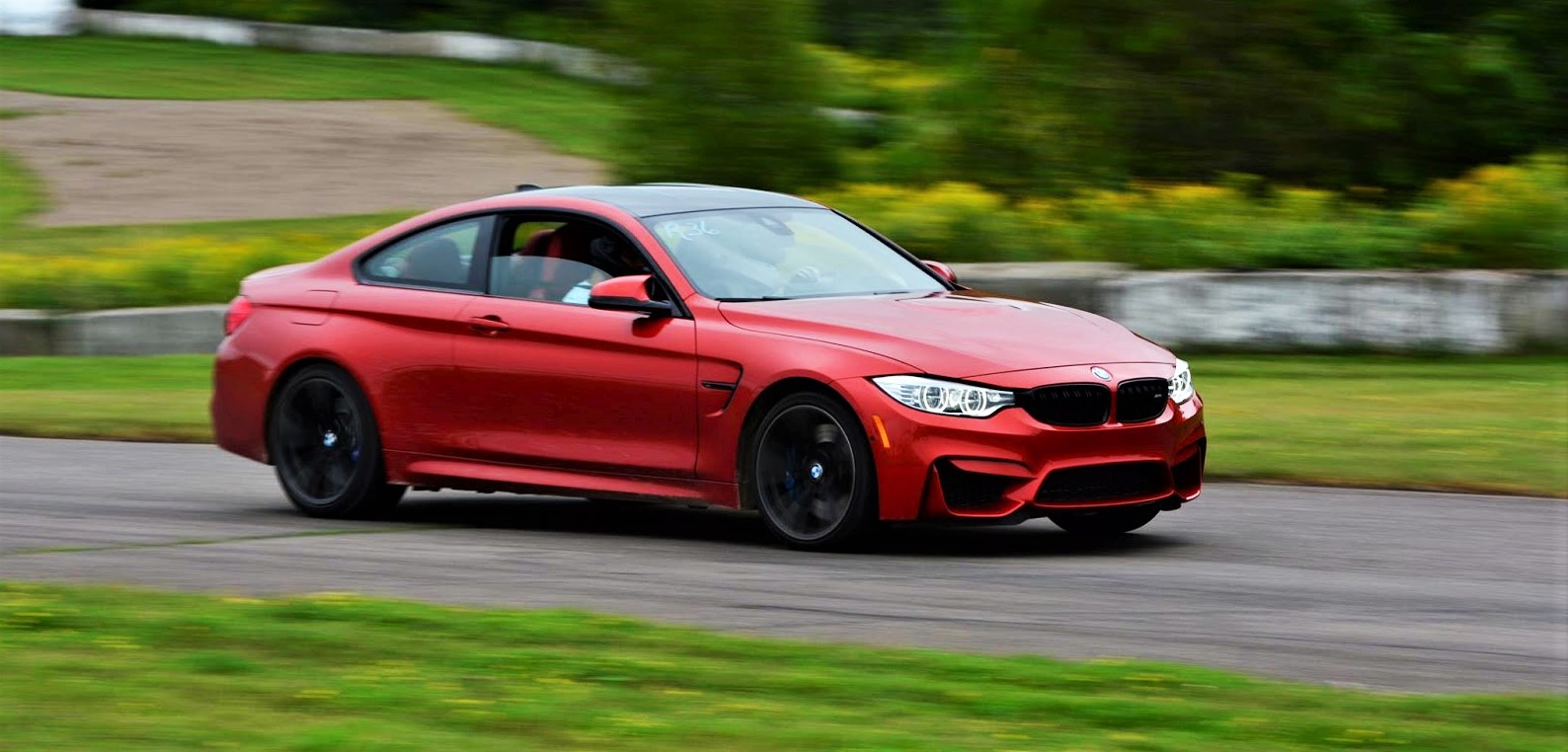The price was far better than a new set of RE-71R's, a little more than half, and local Time Attack rules (Canadian Automobile Sport Clubs) recently made 180 and 200 TW tires equivalent, meaning no PAX or PIP point penalty for going with 180 TW tire like the Pilot Sport Cup 2's. I have been very curious about how PSC2's compare to RE 71R's but I stayed away due to their being painfully expensive and, up to last year, their 180 TW rating would have bumped me up a class. With price and PAX/PIP points not being an issue for a takeoff set, I pulled the trigger and they were at my door a week later.
Size Matters
Of course, the first thing you do when you receive a brand new set of tires is compare heights! Stacked up, they measured about 49.5", almost exactly 1" wider overall than RE 71R's. That also means they are almost exactly 315/30/19 tires if going by a direct conversion, and they were not even mounted whereas the 71R's were mounted when I stacked them. This was a good first impression. The other good first impression was how wide and minimally grooved the outside shoulder is.
Quick heavy cars like Mustangs', Camaro's, M3's, etc. put huge amounts of load on outside shoulders and the Boss 302 is no exception. Wide tread blocks with little grooving suggested to me that they would handle the abuse relatively well (historically a weak point for street Michelin's) and have good response. They absolutely did not disappoint in that regard.
First Impressions
After the first drive which was in the rain, it left another two very strong driving impressions. Very good wet grip (no puddles or standing water, just rain, so can't comment on hydroplaning resistance) and excellent steering response. Compared to RE-71R's, the Cup 2's felt telepathic. You touch the steering wheel, and the car starts to turn. That was fantastic when you want it, but it has a downside. Tramlining was an order of magnitude worse than the 71R's which, when combined with the much faster steering response, made them feel nervous on the highway. If you have to choose between these tires for strictly street driving, the RE 71R's would be better (I would recommend neither for strictly street driving, but I know some people do that).
 |
| 2012 Boss 302 at Atlantic Motorsport Park 2020 T/A Championship - Liev Ryan © |
On track, however, the improved steering response was fantastic. When combined with better feedback, it made the car feel easier to push. It encourages you to trail brake a bit deeper, so you stay in the power longer and carry more speed into a corner. The 71R's also seemed to breakaway a little more abruptly whereas the Cup 2's were more progressive, helping confidence in corner exit as well.
On the other hand, the Cup 2's felt like they definitely had less longitudinal grip - traction - at least in colder temps. During the morning Time Attack sessions, it was much easier to spin compared to the RE-71R's in similar conditions (cool temperatures and overcast). Wheel/axle hop was also worse than RE-71R's so leaving the pits I had to really feather the throttle. Later in the day when it warmed up, axle/wheel hop wasn't that pronounced anymore but the car still felt a little more neutral than on the 71R's, although that could just be subjective due to the faster steering response. So far, subjective impressions are:
1. Good in the wet, comparable to 71R's (absent puddles or standing water, which I have no experience with on either tire).
2. Better steering response than 71R's
3. Bad tramlining, almost nervous on the highway
4. Less traction and harder compound at cool temps, leading to more axle/wheel hop.
5. More progressive loss of traction, good feedback at the limit.
Lap Times
Objective comparison? Well, at face value, it would seem like the Sport Cup 2's are in a league of their own but the reality is that the 71R's were on their last leg. And that leg was broken. This isn't really a fair comparison by a long shot as far as lap times go. In warmer weather, in HPDE setting (longer sessions as I was tuning damper settings), the RE-71R's set a best lap time of 1:17.02 as they were on their way out (they corded in several spots at the end of that very session). A couple of weeks later, my first time driving on the the Sport Cup 2's in a cool morning Time Attack session (about 54 deg F/12 deg C and overcast), that dropped to 1:15.52 with a few other 1:15 laps, suggesting it isn't a one lap wonder. The best lap is a whopping 1.5 s drop on a 77-second lap (excluding out- and in-laps):
Session 1
Conditions: 52 deg F/11 deg C, overcast
Tire pressure: 36 psi hot
Lap 2: 1:15.639
Lap 3: 1:15.523
Session 2
Conditions: 54 deg F/12 deg C, overcast
Tire pressure: 37 psi hot
Lap 1: 1:15.643
Lap 2: 1:16.036
Lap 3: 1:15.979
Lap 2: 1:16.036
Lap 3: 1:15.979
For that best lap of 1:17.02 lap on the 71R's, conditions were different: approx. 65 deg F/18 deg C on the readout, and sunny. Looking at some of my lap time data over the last couple two seasons, I lose about half a second every 10 deg F (all else being equal) so that 1:17.0x might have been a 1:16.5 judging by temperatures on both days, plus or minus a tenth or two. Then you have to account for old vs fresh RE-71R rubber. On the stock suspension last season, the 71R's lost approximately 0.7 s from new to later days with more heat cycles so that 1:16.5 might have been a 1:15.8, plus or minus, on that same day with new tires which would put it very close to the Cup 2's. At the very least, I think a very low 1:16.xx would be doable on fresh 71R's in cooler temps as the car sits now.
One noticeable difference, however, is how much tire marbles the Sport Cup 2's pick up, even in comparison to sticky fresh 71R's. If the above estimates are true on the fast end (mid-high 1:15.xx lap time range) and the two tires really are close in terms of ultimate performance, it could be that they achieve their performance differently with the 71R's being a softer compound that generates more of its grip by deformation (interlock with road surface) vs the Cup 2's which could be a harder/stiffer compound that is more sticky (more grip due to adhesion as it gets hot). That would make sense given their main purpose; the 71R's ultimately an autocross tire that needs to work cold and the Cup 2 is an OEM trackable street tire.
Of course, those estimates are no way to figure out a lap time for a tire... the way to do it is to get a fresh set on the car and run it. But taking into account weather and heat cycled worn tires makes it seem at least possible that the two tires would be close. From behind the wheel, it feels that way as well. I think ultimate lap times would be comparable but with very different attitudes. The 71R's are a bit more secure but relatively numb. The Cup 2's are relatively more responsive and neutral.
Finally, one other difference is that Sport Cup 2's like more pressure. They seemed to run well at 36-37 psi hot while the 71R's got greasy quickly at pressures higher than 34 psi. I haven't had a chance to really push the Cup 2's in a long 15-20 minute session to see how bad they get those higher pressures but they do seem to like higher pressures.
Verdict
I'm not sure when or if I will be going back to 71R's because the Sport Cup 2's are a great value. Wear so far after an "easy" day - three time attack sessions and one short lapping session (picture above of the two front tires) - is not bad at all. With rotation, I see getting 8-10 "easy" days out of a set, less with longer lapping/HPDE days. As long as I can continue to find low mileage GT PPL2 or Mach 1 takeoff sets for a good price, I probably will keep using them. I wouldn't hesitate to run RE-71R's again if Bridgestone sent me a set of 305/30/19 RE-71R's to put head to head with the Sport Cup 2's... but I won't hold my breath for that. With that said, I will be able to get a much better apples to apples comparison next season as the Sport Cup 2 wear and get more heat cycles on them so if you are curious how they compare under similar conditions and wear/heat cycles, make sure to follow for updates next season!
















Comments
Post a Comment